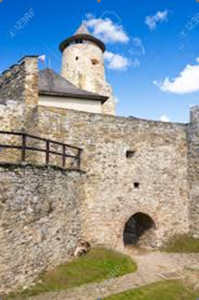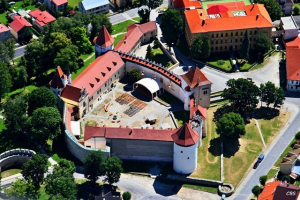Wood Carving
The wood carving craft belongs to the most interesting crafts in Slovakia. It includes decorating wooden objects by carving, sawing, beating, engraving, burning, sharpening and other techniques.
A few decades ago, wood carving used to be only additional complement to other crafts, such as at manufacturing of agricultural tools, woodturning, wooden-spoon making, carpentry, wheels and trolleys manufacturing. Millers, shepherds, miners, beekeepers, gingerbread makers, and farmers were inspired by local life motifs and religous traditions.
Wealthy homesteads decorated by wood their houses, especially gates, columns of porches, furniture, tomb crosses and sometimes agricultural tools.
Shepherds decorated their sticks and tools, miners produced various wooden figures with local life motifs or religious traditions, millers and bee-keepers were known for their mill tools and figure-shaped beehives.
After 1989, when many technological innovations were introduced, the image of a wood-carver cutting a piece of wood with his knife started to be a thing of the past.
Bee-keeping and honey-picking
Bee-keeping is closely connected with honey-picking because it developed from it. Honey-pickling is replacing tree trunks with colonies of bees located very closely to people´s settlements where they were enclosed with fences or sheltered.
From the half of 19th century many kinds of beehives were built and decorated, others had a shape of a figure. „Wine of wines”, so called traditional Slovak mead, has not only sweet flavour, but has also good effects on the human organism.
Pottery
The first written document about pottery dates from the year 1416 and its development was very closely related to the practical needs of the countryside households for various kinds of dishes.
Potters worked especially in winter and sold their goods at markets and fairs. The arrival of the Habans in Slovakia was the reason why the production of faience dishes started. Subsequently many centres of ceramics developed from folk pottery centres such as Modra (Majolica), Pozdišovce, Dechtice, Sekule and Dobrá Voda. Visitors who visit factory in Modra which produces Majolica can try and make their own pieces.
Tinkering
The role of Slovak tinkers, travelling all over Russia and Europe, was to mend the kitchen ware, tinker and sell products from tinplate and wires.
This handicraft dates from 18th and 19th centuries when the tinkers came from the poorest regions of isolated settlements, especially from the regions of Trenčín and Kysuce.
Tinkers had even their own folklore which consisted of songs and dance called drotáriček. To see samples of old and current craftsmen technology you should visit Považské Muzeum in Žilina-Budatín.
Wine-growing
The first written documents about wine-growing date back to 11th – 13th centuries when the Romans founded the tradition of wine-growing on the territory of Slovakia.
Slovak areas with wine-growing are according to the European Union classified into zone B. Four fifths of vineyards are located in the western Slovakia, but the best quality of wine-growing and wine-making is in the Kingdom of Hungary with its Tokay wine from the Zemplínske vrchy mountain range.
Račianska frankovka (Frankovka of Rača) is believed to be the drink of Maria Theresa.
Mountain sheep farming (Salašníctvo)
The tradition of mountain sheep farming in Slovakia was brought by Valachian settlers in the 15th century. Their role was to breed sheep for wool, produce milk and milk products, such as cheese, bryndza and žinčica.
So called valasi, people working at sheep farms, lived at farms far from human settlements from spring to autumn and took the sheep down to villages only in winter. They used to decorate with motifs their wooden mugs (called črpáky), wooden spoons, shepherds hatchets and moulds for making cheese.
Sheep farm workers are recognised not only by special belts, embellished bags, pipes, bagpipes but also by musical instrument called fujara which has been entered in the UNESCO World Heritage List.
Bryndzové halušky has become together with traditional milk products, bryndza (unsalted sheep cheese first let to mature, then salted and rolled into lumps) and žinčica Slovak national meal.
We are glad to provide you our services.
 +421 948 365 187
+421 948 365 187 info@realdealplus.com
info@realdealplus.com



